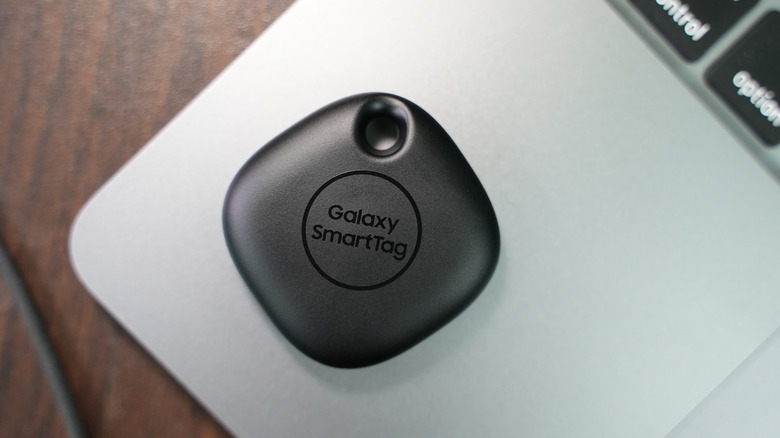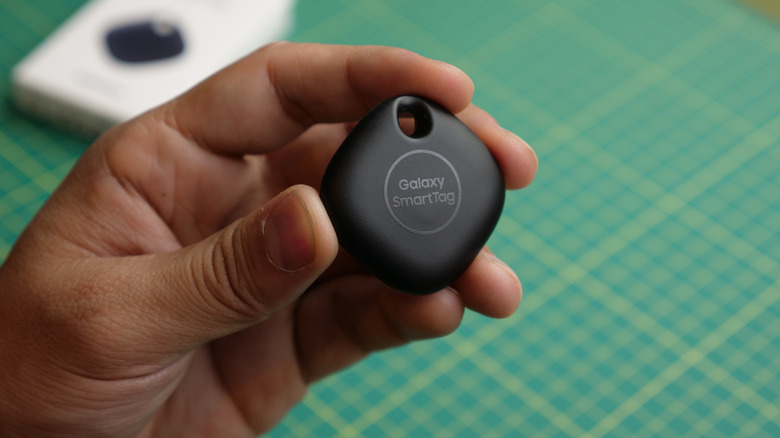
Yasin Hasan/Shutterstock
The Samsung Galaxy SmartTag is a small but mighty tool. By attaching it to your desired belongings and connecting it to the SmartThings app, this handy little device connects to the internet so that they can be found easily if misplaced. Galaxy SmartTags have long-lasting batteries, and are easy to set up and personalize. This is probably why people have come up with many different uses for Samsung’s Galaxy SmartTags.
Samsung’s most recent model, the Galaxy SmartTag2, claims to last up to 500 days in normal mode. In battery-saving mode, it can even go on for 700 days. This is one of the most notable benefits of this tracker when compared to the Apple AirTag, which has a battery life of about a year. But of course, nothing lasts forever. Eventually, the coin-sized lithium battery in your Galaxy SmartTag will run out of juice and will need to be replaced. Doing so is a simple process, but requires care. Here’s an easy step-by-step guide on how to get it done.
How to change your Samsung Galaxy SmartTag’s battery

Hopix Art/Shutterstock
Before changing out your Samsung Galaxy SmartTag battery, double-check the life of your current battery. This can be accomplished by opening the menu in your SmartThings app, going to all devices, and selecting your SmartTag. From here you should be able to see how high or low your battery levels are.
When it’s time to change out your battery, follow these steps:
- Use a flat object such as a credit card, guitar pick, or fingernail to lift the notch on the bottom of your SmartTag.
- Pull until the tag opens up.
- Once opened, take out the dead battery and place in the new one. Ensure that the battery’s positive terminal is lined up with the positive symbol on your SmartTag.
- Snap the tag’s cover back onto the device.
Just like the Apple AirTag, your Galaxy SmartTag runs on CR2032 batteries, which are readily available and easy to find. Considering the overall longevity of the SmartTag’s battery, stocking up on a battery pack or two could be a smart investment, ensuring that you’ll always have batteries on hand for the rare times your device needs a change.